News
News / 07/21/2014 / 1231
At the mere mentioning of the word Malbec, an average wine lover will immediately think of Argentina, which has become synonymous with wines made from this variety. However, it is less known that the history of Argentinian Malbec began in 1852, when this variety was introduced by French agronomists from Cahors. Cahors, in southwest France, is the birthplace of Malbec (also known in this part of France as Cot or Auxerrois). While in Serbia, we are still undergoing unnecessary linguistic discussions as to whether the wine is "red" or "black" and debate whether the Communists wanted to spoil our enjoyment of wine by making it change color, winemakers from Cahors unanimously cry with pride that all other parts of France make and drink red wine, but only they have "the black wine" (vin noir). Indeed, when Malbec wine fills the glass, no additional explanation is required, in the same way as we understand why Vranac grapes are named after "a black horse", rather than blue dun, buckskin or palomino.
Geographically, the wine region of Cahors is located between two giants of French wine - on one side, the famous Bordeaux with its wines and on the other, Languedoc-Roussillon with its huge production, so it is not easy for local vintners to fight for their niche in the wine market. And there is a similarity between Cahors and Serbia: most of the wine production (80%) comprises small family wineries (there are 240 registered wineries), while only 20% are produced by a local wine cooperative. Therefore, the only way to reach out to wine lovers is to keep insisting on quality. It is the same path that our winemakers should follow.
Trends and fashion also rule the world of wines. This is rather risky for a wine region with 4,000 hectares of vineyards, which are exclusively red, pardon black wines. According to the rules set out in 1971, wines from Cahors must contain at least 70% Malbec, with a possibility of blending it with Merlot or Tannat. So, Cabernet Sauvignon admirers will have to look elsewhere. Today, however, the percentage of these varieties in Cahors wines is decreasing, and 100% Malbec wines are highly appreciated. As we learned during the tour of the region, Merlot and Tannat plantings are increasingly replaced by new Malbec vineyards. Thanks to popularity of Argentinian Malbec in the United States, wineries of Cahors have been given an opportunity to present their wines beyond the borders of France. Not surprisingly, the main export markets are the United States and Canada.
Before we set out on a journey through Cahors, we still need to explain the difference between the Argentinian and French Malbec. Malbec in warmer climate zones gives the aromatic profile dominated by aromas of plum, blackberry, plum jam, cooked fruit. Malbec from Cahors has a distinctive aroma of the currants, dark cherries, raspberries, licorice and violet. Also, Argentinian Malbec contains lower levels of acidity than French. Because of the higher acidity and tannins, French Malbec is more suitable for long ageing (vin de garde).
Cahors is located in the triangle between the Atlantic Ocean, the Mediterranean Sea and the Pyrenees. The wine region extends along the banks of the River Lot. The vineyards are located at three positions: in the valley along the river, on the terraces that descend to the river and on the plateau which extends at an average altitude of 300 meters. Terraces that are located closer to the river are made up of alluvial deposits. Their microclimate is more influenced by the humidity created by the river. Wines from these plots are fruity, soft, generally less suitable for ageing than those from the upper plots. Wines from the medium terraces are fuller, and the best wines suitable for ageing come from the upper terraces composed of a mixture of limestone soils and alluvial deposits, quartz-rich rocks, gravel and limestone pebbles. Vineyards on the upper terraces also have better air circulation, thus eliminating excess humidity and impact of the Atlantic climate. The plateau is predominantly made of limestone combined with loose clay stones, chalky and siderolithic elements. Soil is less fertile than on the terraces, there is greater difference between daytime and nighttime temperatures. Generally, the wines from the plateau have greater elegance.
CHATEAU EUGENIE
Our tour of local wineries began at Château Eugénie, which is located in the village of Albas. In the winery, we were welcomed by the owner of the winery Vincent Couture. This winery certainly doesn't lack tradition and history as there are records that in the 15th century wine-makers' family Couture was in the service of the Lord of Albas. Currently, the vineyards cover about 50 hectares of land in the valley and on the terraces along the river Lot.
After the cellar tour, we got an opportunity to taste wines of Château Eugénie. This winery has a portfolio of high-quality wines with geographic origin made from Malbec variety as well as IGP wines made from other varieties. Concerning wines that I got the chance to taste, here I want to present particularly the following:
- Cahors Tradition 2011 – Château Eugénie - Varietal composition: 80% Malbec, 20% Merlot. This wine reflects traditional style of wines from Cahors. Wine has fruity character, juiceness, and plenty of aromas of red currants, forest berries. 10-12 days maceration followed by fermentation in stainless steel tanks, no wood. Tannins wrap the palate in layers, but they maintain their ripe, rounded profile. An unpretentious wine that leaves fresh sensation in the mouth.
-Cahors Haute Collection 2011 – Château Eugénie – Premium wine from Cahors is always made of 100% Malbec. Grapes for this wine originate from vineyards located on the upper terraces. Entire vinification process is carried out in new 400l barrels. The nose is dominated by aromas of black forest fruit accompanied with notes of smoke, vanilla, chocolate. An elegant floral note of violet comes also to the fore. In the mouth, this wine leaves an impression of a great wine, rounded, opulent, powerful.. Tannins are plentiful, soft, rounded, in perfect balance with acidity. Long, elegant finish.
DOMAINE LA BERANGERAIE
In the winery, we were warmly greeted by Marlene Berenger. Yet when entering the home, everything indicates that the winery Domaine La Berangeraie is a family venture, that all family members contribute and work together in order to make wine from their own vineyards that will express the terroir and character of people involved in its creation. The winery is currently in the process of refurbishment, expansion. The family house is located right next to the winery, and the Berengers will show their hospitality by inviting their guests to taste wines in a relaxed home atmosphere, on this occasion, on the balconywith a magnificient panorama of the surrounding hills and vineyards in the immediate vicinity. While sitting on the balcony and observing the surrounding, I figure out what it means to live with vines, because these people see vineyards everyday in front of their eyes, so they can observe on time each and every change, growth phase or possible disease in the vineyard. People and vines are inextricably linked, and the Berengers prove this by the names of their junior heirs Mathis Bacchus, Lelio Malbec, Cyprien Vendemiaire, Cyrvan Dionys, Coline Violette and Zenais Adonis ... Bacchus, Malbeck, Dionysus, violet aromas typical of Malbec from Cahors ... each name carries with it a part of the wine tradition and history of vines and humanity. Also, everyone in the family are oenologists and vintners, which is a sort of guarantee of continuity.
Domaine La Berangeraie The winery was founded about 40 years ago. Currently they process grapes from 32 hectares of vineyards, 35 years old on average, located in the village of Grezels, plots between the third terrace and the plateau. Strictly controlled yields, manual harvesting, natural yeasts, vinification with minimum intervention, with the aim to express terroir of wine. It is also worth noting that the winery does not bring to the market every year new wines. Simply, their wish is to give customers only the best characteristics of the wines from Cahors.
Interestingly, the vineyard plots are characterized by diversity of terroirs: limestone base is veined with Siderolithic formations,which alternate with rich ferruginous soils (terra rossa), white clay or gravel. At some locations, a half of the vineyard is situated at “terra rossa” soils, whilst the other half is planted on rich limestone and white clay soils.
Together with Marlene, we tasted wines from Domaine La Berangeraie. In addition to the portfolio of wines that are currently available on the market in France and abroad (30% of production is exported to USA, Canada, Great Britain, Belgium, Luxembourg and Poland), Marlene gave us the opportunity to try new cuvee from 2011, 100 % Malbec from a vineyard located on gravelly soil, still without label. This wine was bottled on 30.06.2014 and will age for another year in the bottle before it goes to market.
- Tu bois coâ? - Malbec rosé 2013 - Domaine La Berangeraie - In Cahors, production of rosé began in 2003 as a reaction to the global trend of increased consumption of rosé. Of course, the available grape varieties were either Merlot or Malbec. According to Marlene, they wanted to make a wine that will not be like a dry rosé from Provence or sweet rosé from Anjou, but something in-between with 5 g / l of residual sugar. Wine with distinct aromas of raspberries and strawberries, which continue in the mouth with hints of grapefruit and oranges. Refreshing and pleasant. Long tasty finish.
-Cuvee Maurin 2010 -Domaine La Berangeraie - The year 2010 was generally excellent for vinegrowers in southwest France. Wine done in the traditional style of Cahors, no wood. Vinification done in concrete tanks. The more I get the opportunity to taste traditional style Malbec from Cahors, the more I like the contrast of freshness and fruitiness that this wine carries in itself and the full body and distinct tannins which give the wine a dose of seriousness and barroque elegance. On the nose, aromas of black currant and black forest fruits come to the forefront, but with delicate notes of violet, pepper, which turn to licorice and mint in the finish ... Wine is persistent in the mouth ... excellent tannins, ripe, skillfully tamed.
-La Gorgée Mathis de Bacchus 2011 - Domaine La Berangeraie - Pure essence of Malbec in a glass. Dense, extractive, dark ... At first sip, all the power and force of Malbec pour into the mouth and leave a soft, elegant, harmonious impression. Wonderful aromas of black currant, cherry complemented by notes of vanilla and licorice. Vinification and ageing for 24 months in new French-oak barrels. In the mouth, the wine leaves a subtle, silky trail of fruit and tannins. A fantastic example of how elegant and sophisticated the great Malbec can be.
CHATEAU DU CEDRE
While the road was winding through the vineyards on the plateau, I spotted in the distance outlines of two wineries. My next destination was Chateau du Cedre, certainly one of the wineries with the best reputation in Cahors. In front of the winery, we were welcomed by Pascal Verhaeghe. Together with his brother Jean-Marc, Pascal significantly influenced the younger generation of winemakers from Cahors, so their name is pronounced in Cahors with reverence. It all began in the early twentieth century when Leon Verhaeghe moved from Flanders to southwest France. Afterwards, in 1958, his son Charles Verhaeghe moved to the village of Vire sur Lot and there established a family farm. In addition to growing vegetables, cattle breeding and lavender growing, he planted the first vineyards. In 1980, Pascal was touring Burgundy when he decided to focus more on wine production, so he took up oenology studies in Macon. After finishing his studies and practice in California and Burgundy, he devoted himself to developing the winery Chateau du Cedre with his brother Jean-Marc who is also an oenologist. In front of the winery, there is a century-old cedar tree, so the winery was named after it. The cedar tree is a silent witness to family history of the Verhaeghes.
Pascal brought to Cahors knowledge acquired in Burgundy, which also means the understanding of micro-location and single vineyard terroir. As the time went by, he completely switched to principles of organic wine production. Therefore, we first made a tour of two plots in order to show us different terroirs: one with Malbec plantings and another with Merlot.
The extent to which Pascal has been trying to show the terroir in wines is best reflected in the fact that they initially used new barrique barrels, however, experience has taught them to fully switch to 500l barrels and larger barrels in order to control better the impact of wood in their wines.
-Chateau Du Cedre 2011 - Chateau du Cedre - (Varietal composition: Malbec 90%, Merlot 5%, Tannat 5%). Wine is made from grapes grown in 30-year-old vineyards. Even while pouring wine into a glass, you will feel the sweet aromas of ripe fruit, concentrated, with hints of chocolate, coffee and liquorice. In the mouth, full, rich, soft and still retains the freshness and flavor of fresh fruit. Ripe tannins, soft ...
- Le Cedre 2011 - Chateau du Cedre - (Varietal composition: Malbec 100%). The wine comes from vineyards aged between 30 and 50 years. The same primary aromas of ripe black fruit, cassis and cherry still prevail on the nose, but the notes of violet, tobacco and smoke are slightly more distinct in this wine than in the previous one . It impresses me that wine can be both powerful and strong without losing its elegance. In the mouth, minerality reveals beneath the layers of soft ripe tannins. Long finish.
-GC 2011 - Chateau du Cedre (Varietal composition: Malbec 100%). Pascal just smiled mysteriously when I asked him whether GC means Grand Cru ... Certainly grapes for this wine come from the oldest vineyards (50-60 years old). Extremely complex flavors ranging from red fruits, currants, cherries, as well as abundance of spicy and floral notes, mostly violet, develop on the nose. The opulent wine, rich in tannins, yet softer than the previous wine. Long impressive finish. Great wine of Cahors.
CHATEAU DE CHAMBERT
Winery Chateau de Chambert is well known to all admirers of biodynamics. It is one of the ten largest wineries in France which follow principles of biodynamic winemaking, and certainly the biggest in Cahors with 65 hectares of vineyards in total. Property belonging to Chateau de Chambert totals 120 hectares and covers the best sites on the plateau.
Chambert Estate was well-known for wines made from their own vineyards already in the Middle Ages. Invasion of phylloxera at the end of the nineteenth century hit also 300 hectares of vineyards that belonged to the family Bataille, the owners of Chateau de Chambert at that time. Only in 1973 were the vineyards restored and given new life under the label of Chateau de Chambert. Today, the winery is owned by Philippe Lejeune and I was especially pleased that I had the opportunity to meet him, and with his help explore challenges of biodynamic production on such a large property. Philippe guided me first to the 40-year-old vineyard which surrounds the castle. As it is common in biodynamic vineyards, crops are planted next to vines and used subsequently for fertilization of vineyards. All work in the vineyard is planned according to the lunar calendar. That is exactly the most demanding task: speed, efficiency, accuracy ... it's a race against time. For example, the spraying of the Prep 501 should be done early in the morning between 5 h and 7h. According to lunar calendar. spraying should be completed within 2 days. So, all 65 hectares of vineyards should be sprayed with Prep 501 within 4 hours only. And it is all done by hand, without the use of machines. This is only one example of why biodynamic wines are usually more expensive than conventional.
-Chambert Gourmand 2012 Fruite Intense Rouge - Chateau de Chambert - (Varietal composition: Malbec 80%, Merlot 20%). Just as it says on the label, I was expecting an explosion of fruit. Plenty of flavors of currant, cherry, raspberry, ripe plum. Wine aged for about 5 months in stainless steel tanks. In the mouth, impressions follow the same line as the nose. Fruity, juicy, rich, and leads to a long finale that blends into layers of ripe tannins that coat the mouth.
-Chambert Grand Vin 2007 - Chateau de Chambert - (Varietal composition: Malbec 100%). Blend is made from grapes from three separate plots. Wine aged for 12 months, the combination of new French barrels (30%) and used barrels (40% second fill and 30% third fill). In the glass, you get the impression of pure ink - it's thick, black, concentrated. Intense aromas of red fruit, accompanied with subtle spicy notes of pepper, vanilla and smoke. Tannins are rich but deftly tamed. After the initial minerality that can be felt in the mouth, the wine is evolving into a delicious finish dominated by aromas of ripe plums. Well-balanced wine.
CHATEAU LACAPELLE CABANAC
The story of Lacapelle Cabanac Winery is not uncommon in the wine world. Two passionate wine lovers from Paris who made successful professional career as software developers in IT industry have decided to radically change their life and start doing something they truly enjoy. So, they left Paris and headed south in search of appropriate estate where they could realize their life dream. And so their quest brought them to Cahors. Chateau Lacapelle Cabanac is actually a manor farmhouse, which was adapted in 1978 and turned into winery. Thierry Simon and Philippe Verax made a decision as soon as they spotted it - this is where they would grow vines with as little intervention as possible and without any use of chemicals.
In the winery, I was welcomed by Philippe Verax. First we made a tour around the winery and visited the vineyards where they planted Malbec and to a lesser extent Merlot. Starting in 2002, the winery has been involved in making wine with respect for the principles of organic production. The first view of the vineyards indicates a different approach to the vine. When berries are formed, Philippe and Thierry cease to perform pruning and intervention on the vine. Grapevine is a living being. After each pruning or cutting the shoots, the plant consumes its life energy to heal wounds, and in this period the vine is more vulnerable to disease. That's why they let the vine itself collect naturally in grapes all the characteristics of the terroir. The fact that vines grow on poor limestone soil which provides excellent drainage make the whole process easier.
After a tour of the cellar, Philippe introduced me to their wines, among which there are also some awarded at Decanter. Conversation with Philippe reveals an impression of a modest person who humbly and without much fanfare tells the story of his wines. However, the wines speak for themselves instead ...
- Prestige 2011 - Chateau Lacapelle Cabanac - (Varietal composition: Malbec 90%, Merlot 10%) This wine seems to me more convincing than the previous wine I have tasted from the entry level. Excellent balance of freshness and fruitiness and aromas that come from aging for 24 months in French barrique barrels. Despite barrique influences, fruity aromas of blackcurrant and blackberry come to the fore. The finish is dominated by persistent aroma of licorice.
-Malbec XL 2009 - Chateau Lacapelle Cabanac - (Varietal composition: Malbec 100%). Strong wine, forceful, concentrated. Tannins are rich, coating the mouth in layers, but aging in new French oak barrels for over 20 months softened them entirely. The wine has excellent structure which is accompanied with spicy and sweet notes originating from the barrel, which all results in unique character and expressive convincing finish.
CHATEAU COMBEL LA SERRE
As I was approaching the winery Combel La Serre in the village of Cournou, 17km far from Cahors, the rain had already started to drizzle. It is probably the influence of the Atlantic and the humidity in the air which rests on the rolling hills and wraps them like a haze. Winery Combel La Serre is another family winery from Cahors which is run by the father and son, Jean-Pierre and Julien Ilbert.
When I arrived in the winery, I met Jean-Pierre. He was busy preparing a shipment of wine that will set out on a long journey to Canada. Soon, Julien arrived as well. With him, I first went to visit the vineyards ... They grow 25 hectares of vineyards in total, predominantly Malbec, but very soon Julien revealed a big surprise. First, we visited a plot called the "Lake of wild boars" because wild boars regularly come to this vineyard and the neighbouring slough. It's one of their best microlocations where Malbec gives excellent results. The fact that the vineyards are located in three different soil types: clay, limestone and "terra rossa" rich in iron provides them with the opportunity to combine grapes from different micro-locations to get balanced and expressive wines.
And then, we go to a nearby hillside to look at new vineyards where Julien planted surprisingly enough - Vermentino, an Italian variety that has somehow found fertile ground in the south of France, in the vineyards around Cannes and in Provence, and now this variety has also arrived in Cahors. I asked Julien how he got the idea to plant Vermentino, and he briefly replied with calm voice, "Well, I like the variety." And it's a great example to show a new, young generation of winemakers from Cahors. Passionate, in love with the vine, ready to push the boundaries, to experiment, to respect tradition but willing to cross the usual boundaries ... Julien strives to follow in all his wines features of Malbec which exudes freshness and fruitiness. The goal is to find a balance between the powerful tannins and refined freshness.
-Coeur De Cuvee 2010 - Combelle Chateau La Serre - (Varietal composition: Malbec 100%) Concentrated wine, lots of extract, with fully intensified fruitiness of Malbec and distinct aromas of black currant and black forest fruits, with elegant spicy notes. After 12 months of aging in French oak (combined new and used barrels), tannins have calmed down. Another great example of wine where the fruitiness and freshness of Malbec are skillfully and harmoniously complemented with volume and plenty of ripe tannins.
- Elite 2009 - Chateau La Combelle Serre- (Varietal composition: Malbec 100%). This wine is unlike any other that I had the opportunity to taste during this visit to wineries of Cahors ... The style of this wine is more reminiscent of a good Argentinian Malbec ... The nose is dominated by aromas of plum, blackberry and sweet spices, licorice, floral notes of violet . Wine aged for more than 15 months in new barrels of French oak. Powerful full body, complemented with ripe, rounded tannins.
DOMAINE MAS DEL PERIE
Winery Mas del Perie is located in the village of Trespoux-Rassiels. Another winery that occupies the best plots on the plateau. Fabien Jouves, the young owner of the winery, at the first meeting fascinated me with energy and contagious commitment to the vine and wines. One young person embodies at the same time a winemaker, alchemist, and radical artist and he decided to transform the gifts of nature in a bottle instead of merely making wine.
Fabien started making his own wine in 2006. His education in Bordeaux has taught him how to use barrels skillfully, but his wine philosophy is more reminiscent of Burgundy ... He has excellent knowledge of his vineyards, each parcel, each micro location ... He uses the soil knowledge in the best way in order to express character of wine. I first made a tour of vineyards with Fabien in order to get introduced to clay and limestone soils of the plateau, veined with gravel deposits. And then the best plots on the soils created during the late Jurassic period (Kimmeridgian), a limestone plateau made up of loose clay stones, more or less mixed with marl on the chalky terrain and siderolithic formations, which all contributes to wine's complexity and minerality. While passing by the vineyards of his neighbors, he cannot help commenting that it is all "pure chemistry, poisoned by spraying," and that it is not the right way to produce grapes which are in be in balance with nature and which will yield wines of superior quality.
The true surprise followed in the cellar. Fabien is constantly on the trail of something new, something that he has just been trying out in order to see the final outcome... We start tasting and each barrel reveals something new, something innovative, evidence that Fabien pushes the boundaries and builds the future of Cahors, together with other young winemakers ... The focus is not only Malbec, although its place and significance for Cahors remain sacred. You will find there Malbec from amphorae, barrels are not only made from French oak, there are also some barrels imported from Austria made by the best Austrian barrel-makers. In one corner of the cellar is the concrete "egg" fermentor - a concrete tank which allows cyclical flow during fermentation due to egg-shaped container. French biodynamic winemakers often say that the most perfect shape in the nature is an egg shape, and wines mature best in such containers. But surprises never cease ... Fabien's energy is inexhaustible: we taste "orange wine" made from Chenin Blanc and naturally sweet wine made from Tannat grapes... After so many centuries during which Tannat was used only in small proportion as a supplement in Malbec blends, Fabien dared to try to make something new with it ... Every year, a certain quantity of grapes is put aside for traing out new ideas, pushing boundaries ... A wine region with such young oenologists and winemakers need not fear about the future.
- Cahors Malbec Cuvée “Les Escures” 2013- Mas del Perié- Wine from grapes originating from 20-25 year-old vineyards. Fermentation and ageing in concrete tanks. Unfiltered. The wine is characterized by exceptional freshness, distinct salty minerality. Pure fruit in a glass, aromas of blackcurrant and plum prevail... Another example why I love traditional style of Malbec, whereas this wine has a distinct character which makes it memorable and different from any other.
-Cahors Malbec Cuvée “La Roque” 2013 – Mas del Perié- Subtle, elegant, soft-feel Malbec, entirely opposite to rustic reputation of this variety. 50% aged in concrete tanks, 50% in neutral French-oak barrels. The wine is dense, concentrated, extractive. Aromas of blackberry, blackcurrant, pepper dominate the nose, whilst subtle floral aromas appear in the finish.
DOMAINE DU PRINCE
While the rain began to drizzle again outside, the winding road led me to the village of Cournou. There stands a winery that has belonged to the Jouves for 300 years. A story goes that an ancestor of this family once delivered his wine to kings of France and Russia. Having had the privilege to see the king in person, he quickly gained the nickname "Prince" (lou Prince). So, the winery got its current name after him. I was greeted at the winery by Helene and Didier Jouves and we immediately (despite the rain) started a tour of the best plots of vineyards, including the famous 2 hectares which produce grapes for Lou Prince wine. That vineyard is 40 years old.
Afterwards,we also visited the cellar. It is interesting to mention that this winery manages to sell 70% of their wines directly from the cellar, and in France their wines are well reputed for the great price/quality ratio. 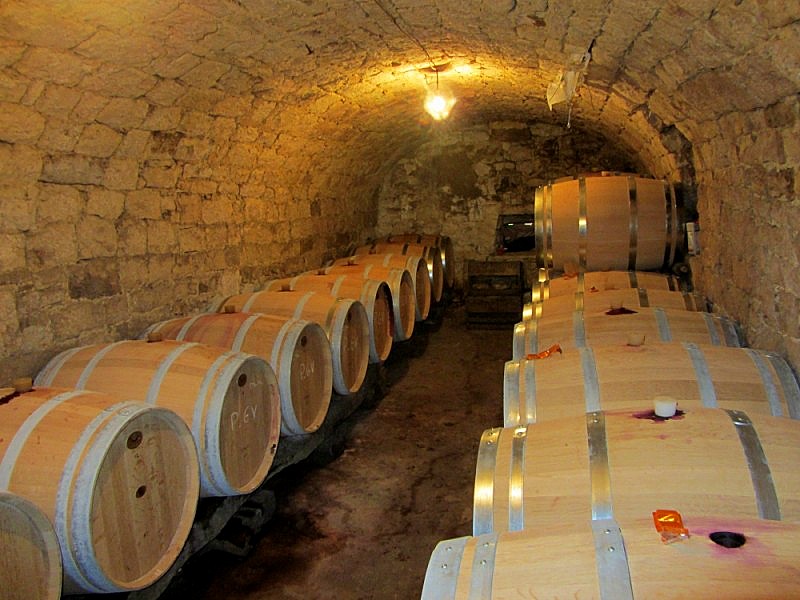
-La Chene du Prince 2008-Domaine du Prince- This wine is characterized by a characteristic trait of elegance that can be followed in the entire portfolio of wines from Domaine du Prince. Soft, sophisticated wine with excellent balance.
-Lou Prince 2010 – Domaine du Prince- Ovo vino je steklo izuzetnu reputaciju i izvan granica Cahors-a i Francuske. Iako je moćno, puno, ekstraktivno, vino je izuzetno elegantno. U čaši poput mastila, na nosu dominiraju crni dud, šljiva, višnja uz note koje potiču od bureta. Tanini u slojevima oblažu usta, međutim u završnici ipak preovlađuje voćna impresija.This wine has earned an outstanding reputation beyond the borders of Cahors and France. Although it is powerful, rich, extractive, the wine remains extremely elegant. In the glass, as black as ink. The nose is dominated by aromas of black mulberry, plum and cherry with notes originating from the barrel. Tannins coat the mouth in layers, but fruitiness still prevails in the finish.

Tomislav Ivanović
Awarded wine writer, wine critic and contributor to selected wine magazines. WSET3-certified author and editor-in-chief of www.vinopedia.rs. Member of Vojvodina Sommelier Association. Juror in national and international wine competitions. Lecturing about wines of Serbia and the Balkans. Local partner of Wine Mosaic organization. Co-founder of International Prokupac Day.

Pročitajte i druge članke iz ove rubrike:


SPASIMO STARE VINOGRADE SRBIJE
PROČITAJ VIŠE
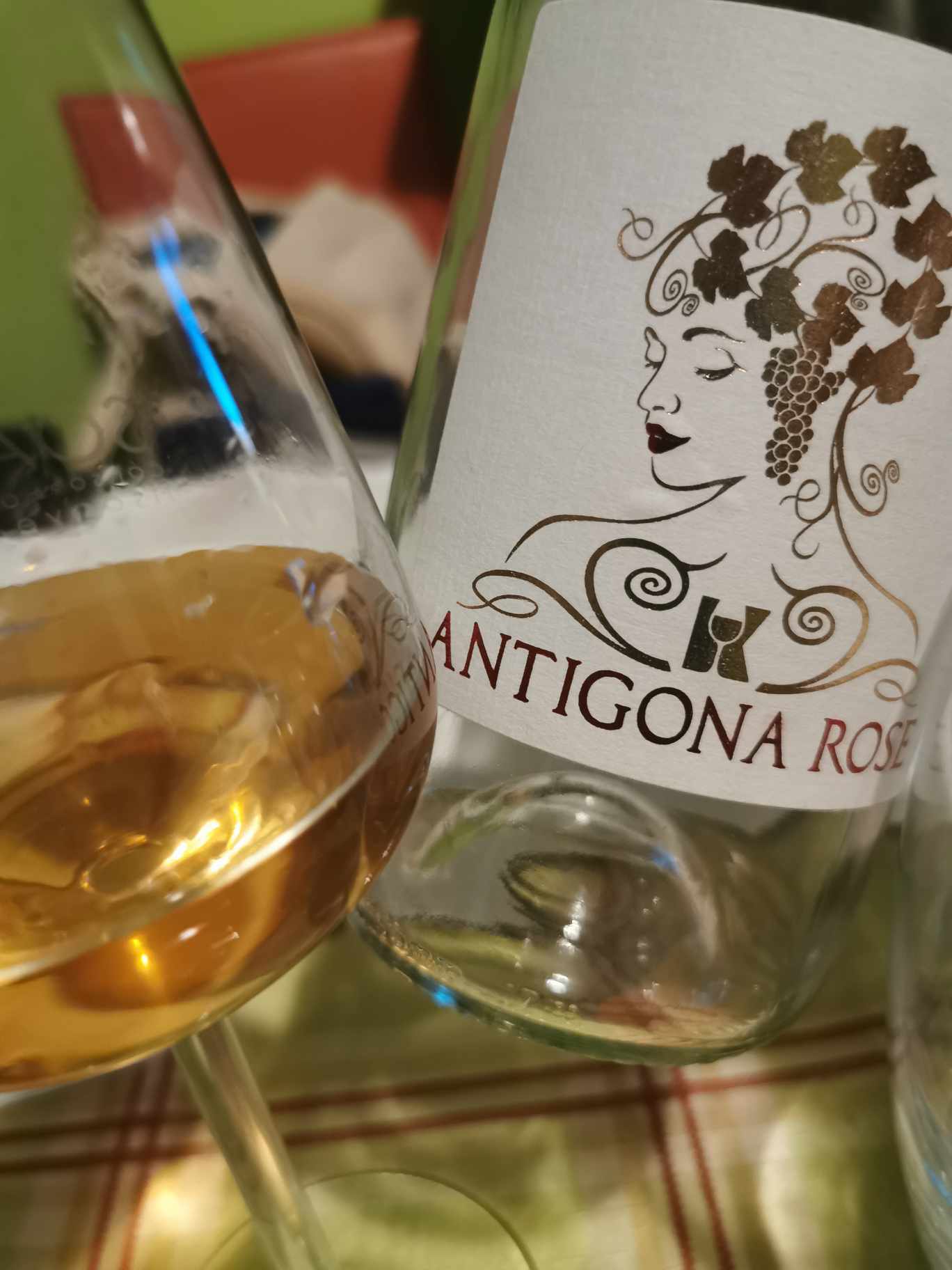

NAŠLI SMO ANTIGONU IZ ORAHOVCA
PROČITAJ VIŠE
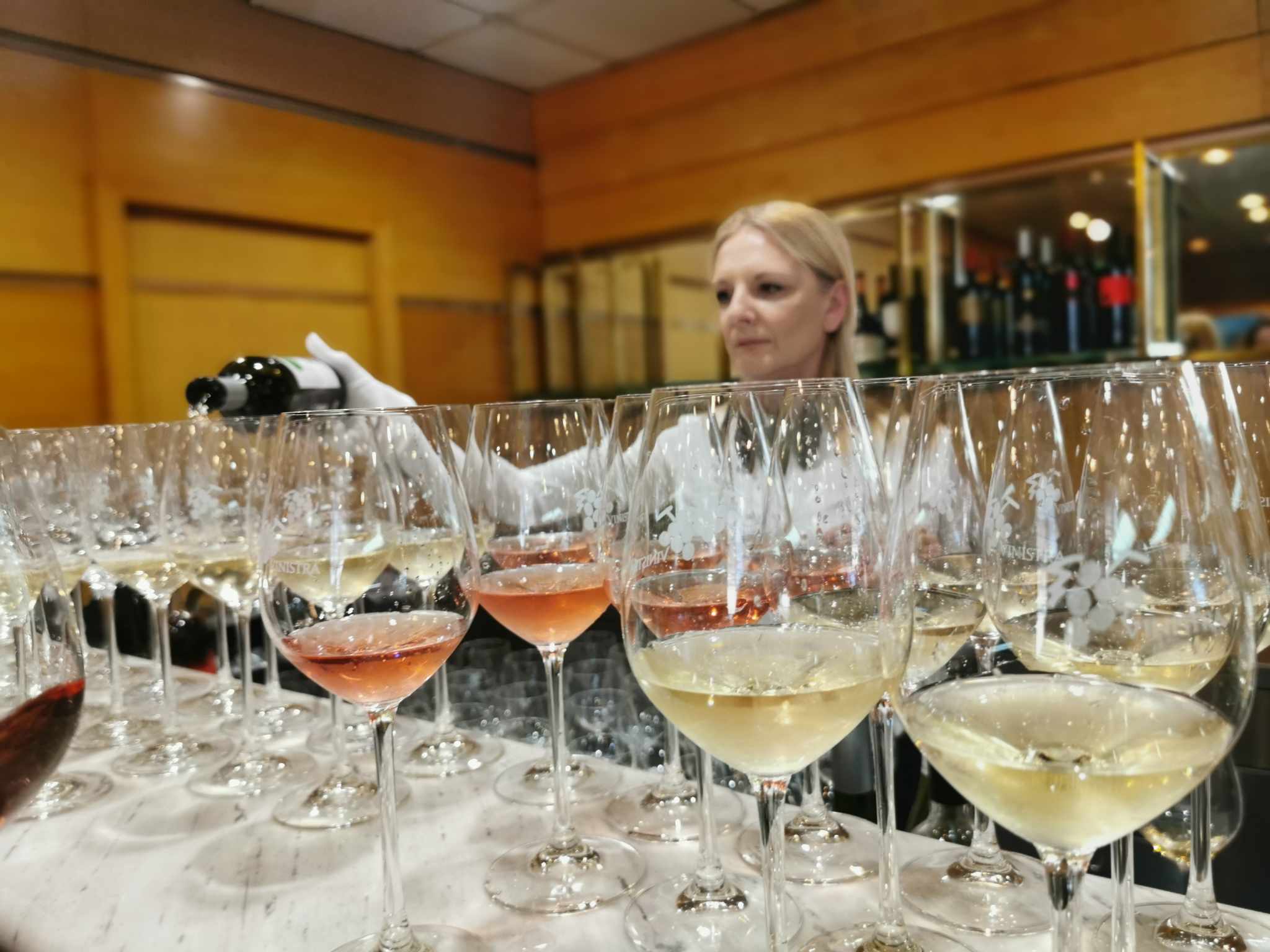

SRPSKO VINO KOŠTA 100 EUR - I ŠTA ĆEMO SAD?
PROČITAJ VIŠE
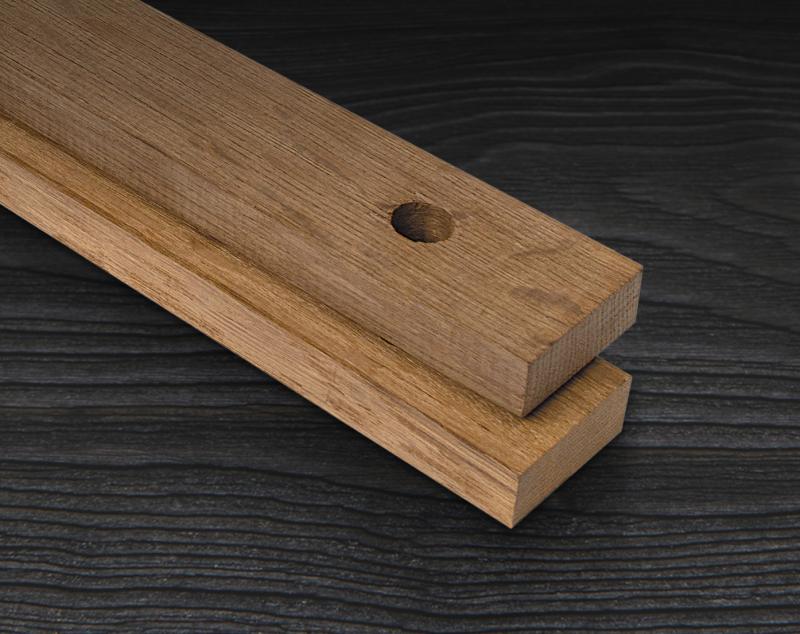

MOŽE LI VINO BEZ BURETA? IMA LI ALTERNATIVE?
PROČITAJ VIŠE
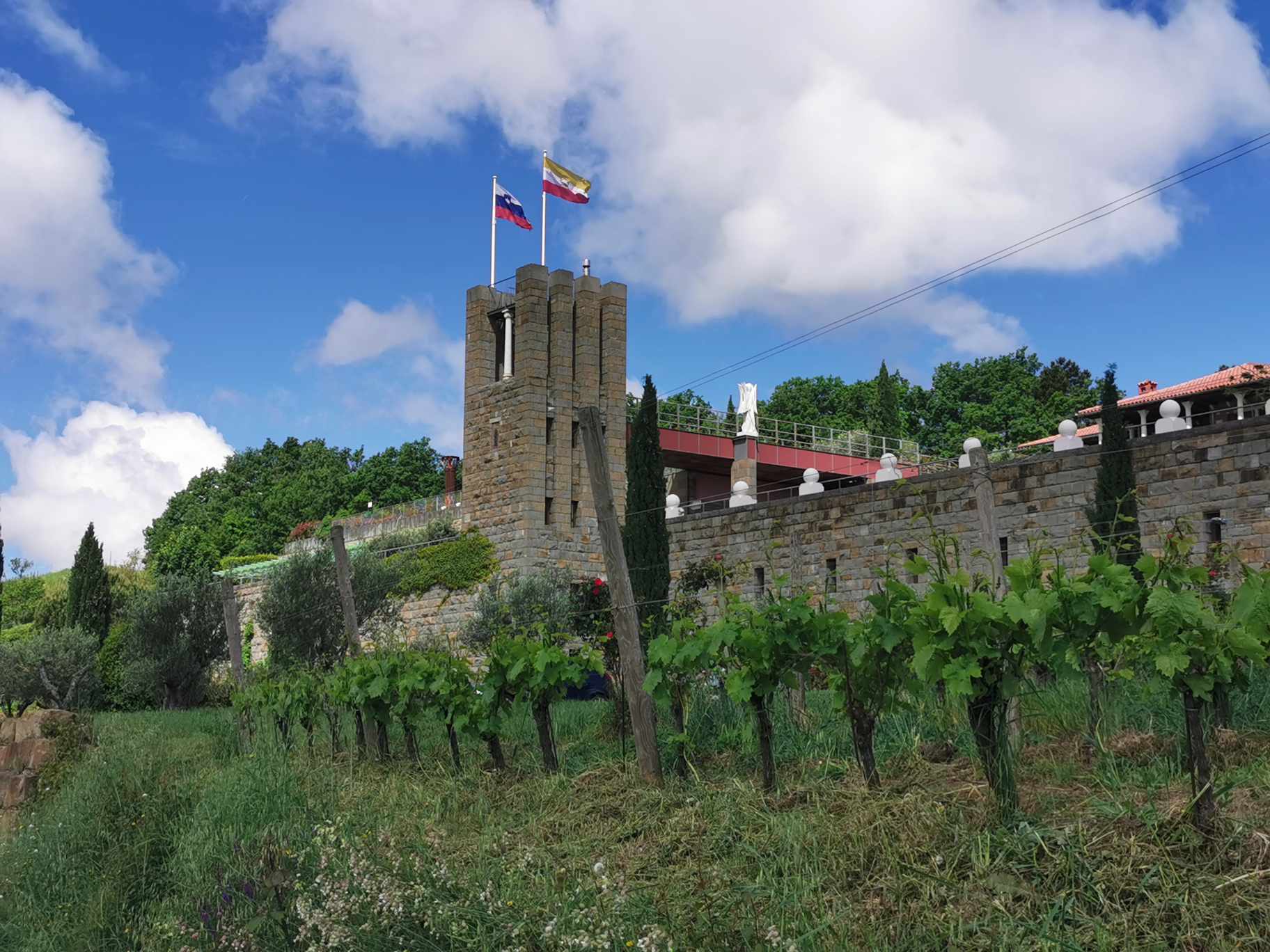

SANTOMAS - CRVENA VINA ISTRE
PROČITAJ VIŠE
Winner MILLESIMA BLOG AWARD 2016

Pobednik MILLESIMA BLOG AWARD 2016
VINO & FINO wine personality of the year 2016

VINO & FINO vinska ličnost godine 2016